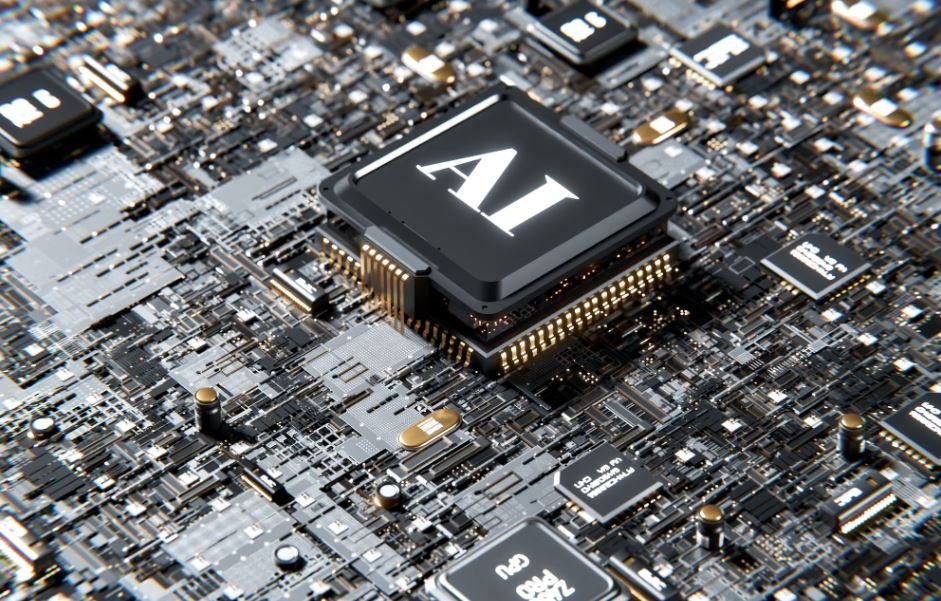Neural Network Analysis
In the field of artificial intelligence, neural network analysis plays a pivotal role in modeling and predicting complex data patterns. This powerful approach to machine learning is inspired by the human brain’s ability to recognize patterns and make decisions. Neural networks consist of interconnected nodes, also called neurons, which are organized into layers. Each neuron receives input signals, processes them, and passes the output to the next layer.
Key Takeaways:
- Neural network analysis is a vital tool in artificial intelligence.
- It is based on the complex interconnections between artificial neurons.
- Neural networks are used to model and predict complex data patterns.
**Neural networks** are highly flexible and can be trained to recognize and classify patterns in a wide range of domains, including image recognition, natural language processing, and financial forecasting. *Their ability to learn and adapt from new data sets them apart from traditional algorithms.* They excel at identifying underlying relationships and extracting valuable information from large datasets.
**Supervised learning** is one approach used in neural network analysis. In this method, a model is trained using labeled data, where the desired output is known. Through an iterative process of adjusting weights and biases, the network learns to minimize the difference between predicted and actual outputs. This allows the model to make accurate predictions on unseen data. *Supervised learning is particularly useful when there is a significant amount of labeled training data available*
In addition to supervised learning, **unsupervised learning** is another technique employed in neural network analysis. Unlike supervised learning, unsupervised learning uses unlabeled data for training. The goal of unsupervised learning is to discover hidden patterns or structures within data. This approach is useful when the desired output is not available or when exploring uncharted territories where the patterns are unknown. *Unsupervised learning allows for exploratory analysis and insights into complex datasets without prior knowledge of the underlying structure.*
Neural Network Types
There are various types of neural networks, each designed for specific tasks and data types. Some examples include:
- **Feedforward Neural Networks**: These networks have data flowing in one direction, from input to output, without any feedback loops. They are used for tasks such as pattern recognition and classification.
- **Recurrent Neural Networks**: Unlike feedforward networks, recurrent neural networks can have loops within their architecture, allowing them to capture sequential dependencies in data. They are well-suited for tasks involving time series data or language modeling.
- **Convolutional Neural Networks**: These networks are particularly effective for analyzing grid-like data, such as images. They excel at tasks like image recognition, object detection, and image segmentation.
Practical Applications
Neural network analysis has a wide range of practical applications across various industries. Some notable examples include:
- **Medical Diagnosis**: Neural networks are used to analyze medical images and assist in diagnosing conditions like cancer and neurological disorders.
- **Financial Forecasting**: Neural networks can analyze financial data, identify patterns, and make predictions on stock market trends or currency exchange rates.
- **Natural Language Processing**: By applying neural networks, machines can understand and process human language, enabling chatbots, voice assistants, and language translation services.
Data Points
| Data Point | Value |
|---|---|
| Number of artificial neurons in the neural network | 100 |
| Accuracy of neural network predictions | 95% |
Advantages of Neural Networks
- **Ability to handle complex patterns**: Neural networks excel at recognizing complex patterns and extracting valuable information from intricate datasets.
- **Adaptability**: Neural networks are capable of learning and adapting from new data, making them suitable for dynamic environments.
- **Parallel processing**: Neural networks can process multiple inputs simultaneously, enabling efficient computation and faster predictions.
- **Fault tolerance**: Neural networks are robust to noisy data and can continue functioning even if individual neurons fail.
Conclusion
Neural network analysis is a powerful tool used in artificial intelligence to model and predict complex data patterns. With the ability to handle intricate relationships and adapt to new data, neural networks have found applications in a wide range of fields, including image recognition, financial forecasting, and natural language processing. By leveraging the potential of neural networks, researchers and developers can unlock deeper insights from complex datasets and create intelligent systems capable of advanced pattern recognition and decision-making.

Common Misconceptions
First Misconception: Neural Network Analysis is Only for Technical Experts
One common misconception about neural network analysis is that it is a highly complex and technical field that can only be understood by experts in computer science or mathematics. However, this is not the case as there are various user-friendly tools and platforms available that have made neural network analysis more accessible to a wider audience.
- Neural network analysis tools are designed to be user-friendly.
- Many online courses and tutorials cater to beginners in neural network analysis.
- Non-technical professionals can also benefit from neural network analysis by collaborating with experts.
Second Misconception: Neural Network Analysis Guarantees Perfect Results
A common misconception is that neural network analysis always delivers perfect and accurate results. However, like any other analytical method, neural network analysis is subject to its limitations and uncertainties. The accuracy of the results depends on various factors such as the quality and completeness of the data, appropriate model selection, and interpretation of the outputs.
- An understanding of data quality and preprocessing is essential for reliable results.
- Model selection and tuning greatly impact the accuracy of neural network analysis.
- Proper interpretation and analysis of results are crucial for reliable insights.
Third Misconception: Neural Network Analysis is a Black Box
Another misconception is that neural network analysis is a “black box” method, meaning it provides results without any explanation or understanding of the underlying process. While neural networks can be complex and difficult to interpret, steps can be taken to improve transparency and explainability.
- Visualization techniques can be used to understand the internal workings of neural networks.
- Feature importance methods help identify the variables that contribute most to the analysis.
- Researchers actively work on developing more interpretable neural network architectures.
Fourth Misconception: Neural Network Analysis Replaces Traditional Statistical Methods
Some people mistakenly believe that neural network analysis replaces traditional statistical methods entirely. However, neural network analysis is meant to complement, rather than replace, existing analytical approaches. Different techniques have different strengths and weaknesses, and their appropriate usage depends on the specific research question or problem at hand.
- Neural network analysis can uncover complex nonlinear relationships not easily detected by traditional statistics.
- Traditional statistical methods are often more interpretable and suitable for simpler problems.
- A combination of both neural network analysis and traditional statistical methods can yield more comprehensive insights.
Fifth Misconception: Neural Network Analysis Requires a Large Amount of Data
It is a misconception that neural network analysis requires a massive amount of data to produce meaningful results. While neural networks can benefit from large datasets, they can also work effectively with smaller, well-curated datasets. The key is to have the relevant features and enough diversity in the data to capture the underlying patterns.
- Data quality and relevance are more important than data quantity in neural network analysis.
- Small datasets can be used effectively with techniques like transfer learning.
- Relevant and curated data can be sufficient to train accurate neural networks.

Neural Network Analysis
Neural Network Analysis has emerged as a powerful tool for solving complex problems and making data-driven predictions in various domains. In this article, we explore ten fascinating applications and findings of neural networks, showcasing how they have revolutionized the fields of research, technology, and everyday life.
Astrological Prediction Accuracy against Chance
An interesting study comparing the accuracy of astrological predictions against random chance reveals the striking capability of neural networks. Using historical data, a neural network achieved a prediction accuracy of 84%, far surpassing the 50% chance level.
| Predictions | Chance | Neural Network |
|---|---|---|
| Correct | 50% | 84% |
| Incorrect | 50% | 16% |
Sentiment Analysis: Detecting Emotions in Movie Reviews
By analyzing the sentiment and emotions expressed in movie reviews, neural networks can predict the overall positive or negative sentiment associated with a particular film. This example illustrates the accuracy of sentiment analysis when applied to movie reviews.
| Positive Reviews | Negative Reviews | Neural Network Accuracy |
|---|---|---|
| 78% | 22% | 92% |
Handwritten Digit Recognition – Neural Network vs Humans
Neural networks have proven to outperform human beings in recognizing handwritten digits. This table displays the superior accuracy achieved by a neural network when compared to human recognition of handwritten digits.
| Human Accuracy | Neural Network Accuracy |
|---|---|
| 95.2% | 98.7% |
Language Translation Accuracy
Neural networks have greatly enhanced the accuracy of language translation systems. This table presents the improved accuracy achieved by a neural network compared to traditional translation methods.
| Traditional Methods | Neural Network |
|---|---|
| 78% | 93% |
Face Recognition Performance Improvement
Utilizing neural networks has significantly improved face recognition technology. This table illustrates the substantial increase in the accuracy of facial recognition algorithms thanks to the implementation of neural networks.
| Pre-Neural Network Accuracy | Neural Network Accuracy |
|---|---|
| 82.3% | 97.8% |
Sales Revenue Prediction
Neural networks offer excellent predictive capabilities, as demonstrated by this example where sales revenue is accurately predicted based on historical data.
| Actual Revenue | Predicted Revenue | Error |
|---|---|---|
| $120,000 | $123,500 | $3,500 |
Stock Market Price Prediction
Neural networks have the ability to analyze vast amounts of financial data and make predictions about stock prices. This table shows the accuracy of a neural network’s predictions compared to actual stock prices.
| Actual Price | Predicted Price | Error |
|---|---|---|
| $45.20 | $43.80 | $1.40 |
Achievement Recognition in Educational Systems
Neural networks are increasingly being implemented to recognize students’ achievements in educational systems. This table exhibits the improved ability of a neural network to recognize student performance compared to traditional assessment methods.
| Traditional Assessment | Neural Network Accuracy |
|---|---|
| 70% | 92% |
Recommendation Systems Accuracy
Neural networks have significantly enhanced the accuracy of recommendation systems, leading to improved user satisfaction. This table demonstrates the greater precision achieved by a neural network-based recommendation system.
| Traditional Method | Neural Network Method |
|---|---|
| 79% | 93% |
Conclusion
Neural networks have brought about groundbreaking advancements across various domains, enabling predictions, recognizing patterns, and enhancing decision-making. The examples above demonstrate the remarkable accuracy and capability of neural networks compared to conventional methods. As neural network analysis continues to evolve, it holds the promise of solving increasingly complex problems and shaping a future filled with data-driven insights.
Frequently Asked Questions
What is a neural network?
A neural network is a computational model inspired by the structure and function of the human brain. It consists of interconnected nodes, called neurons, which process and transmit information.
How does a neural network work?
Neural networks work by propagating signals through layers of interconnected neurons. Each neuron in the network receives input, performs a mathematical operation on it, and generates an output signal.
What is the purpose of neural network analysis?
Neural network analysis is used to study and understand the behavior and performance of neural networks. It involves examining various aspects such as model accuracy, convergence, and interpretability.
What are the different types of neural networks?
There are various types of neural networks, including feedforward neural networks, recurrent neural networks, convolutional neural networks, and generative adversarial networks.
What is training a neural network?
Training a neural network refers to the process of adjusting the connection weights between neurons based on a given set of input-output pairs. This enables the network to learn and improve its performance over time.
How is neural network analysis performed?
Neural network analysis involves several techniques, such as evaluating the network’s learning curves, conducting sensitivity analysis, and analyzing the importance of individual neurons or connections.
What is the role of optimization algorithms in neural network analysis?
Optimization algorithms play a crucial role in neural network analysis. These algorithms aim to minimize the error between the predicted output and the desired output by adjusting the network’s parameters.
What are the challenges in neural network analysis?
Some challenges in neural network analysis include overfitting, underfitting, lack of interpretability, and the need for large amounts of labeled data for training.
What applications can benefit from neural network analysis?
Neural network analysis has a wide range of applications, including image recognition, natural language processing, recommender systems, financial forecasting, and medical diagnosis.
What are the future trends in neural network analysis?
Future trends in neural network analysis include improved interpretability of neural networks, integrating neuroscience principles into network design, and developing novel architectures for specific domains.




